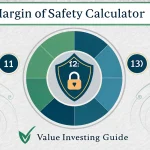Markup Percentage Calculator
Is this tool helpful?
How to use the tool
- Fill “Price” with your selling price, e.g., 99.95 or 310 USD.
- Fill “Cost” with what you paid, e.g., 62.40 or 205 USD.
- Press Calculate; the tool shows your markup percentage instantly.
- Compare scenarios by adjusting either field to see how markup shifts.
Formula used
The script applies:
$$ \text{Markup %}= rac{\text{Price}-\text{Cost}}{\text{Cost}}\times100 $$
Example calculations
- Cost = 62.40 USD, Price = 99.95 USD
$$ rac{99.95-62.40}{62.40}\times100 = 60.15\%$$ - Cost = 205 USD, Price = 310 USD
$$ rac{310-205}{205}\times100 = 51.22\%$$
Quick-Facts
- Typical retail markups range 20 – 50 % depending on sector (ShopKeep blog, 2022).
- Cost inputs should be > 0 USD; zero cost makes markup undefined (SBA, 2023).
- Use gross margin, not markup, for income-statement reporting (Investopedia, 2023).
- Markup above 70 % often signals premium pricing strategies (Harvard Business Review, 2021).
FAQ
What is markup percentage?
Markup percentage is the percentage difference between cost and selling price relative to cost (Investopedia, 2023).
How does the calculator work?
It subtracts cost from price, divides by cost, multiplies by 100, and displays the result instantly.
Can I use it for services?
Yes. Treat labor and materials as cost, then enter your planned fee as price (SBA, 2023).
Why isn’t zero cost accepted?
Division by zero is undefined; a positive cost is required for any meaningful markup.
Is markup the same as margin?
No. Margin divides profit by selling price, while markup divides profit by cost (Shopify Help Center, 2022).
What’s a healthy markup?
Most small retailers aim for 30 – 50 % to cover overhead and profit (SBA, 2023).
How often should I recalculate?
Recompute whenever costs change or quarterly in stable markets (CPA Journal, 2021).
Quote from experts on pricing?
“Price must exceed total cost by enough to fund growth and risk” (McKinsey Pricing Report, 2020).
Important Disclaimer
The calculations, results, and content provided by our tools are not guaranteed to be accurate, complete, or reliable. Users are responsible for verifying and interpreting the results. Our content and tools may contain errors, biases, or inconsistencies. Do not enter personal data, sensitive information, or personally identifiable information in our web forms or tools. Such data entry violates our terms of service and may result in unauthorized disclosure to third parties. We reserve the right to save inputs and outputs from our tools for the purposes of error debugging, bias identification, and performance improvement. External companies providing AI models used in our tools may also save and process data in accordance with their own policies. By using our tools, you consent to this data collection and processing. We reserve the right to limit the usage of our tools based on current usability factors.







